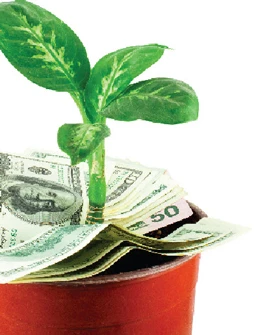
 Believe it or not, consumer interest in houseplants is growing. Do we hear skeptical snickers out there? Are you having trouble even getting customers into the foliage greenhouse? That's not surprising. Because the least effective place to sell houseplants is within the greenhouse.
Believe it or not, consumer interest in houseplants is growing. Do we hear skeptical snickers out there? Are you having trouble even getting customers into the foliage greenhouse? That's not surprising. Because the least effective place to sell houseplants is within the greenhouse.
Thumb through any home and garden magazine and you'll see indoor foliage on display: In interesting pots, in vertical plantings, on kitchen windowsills—you get the picture. The plants alone mean nothing to the average consumer. But put them in a lifestyle setting, and you give customers a reason to buy.
Austin Bryant with Heart of Florida Greenhouses in Zolfo Springs, Fla., (www.heartplants.com) frequently visits his retail customers to see how foliage plants are faring. Indeed, there are top-quality, well-cared-for plants on the benches. But that's the problem. They're sitting on benches, sequestered in the greenhouse.
"It floors me that garden centers have a houseplant 'section,'" Bryant said. "Garden centers spend so much time to make the store feel 'homey' and inviting—nice colors throughout, a small eating area—so many things to make the place feel like a home. Then they outcast the interior foliage in a greenhouse. Why not bring those plants into the café area? Around the register? By the front doors? Try to create situations with different plants in different containers?"
Bryant recalled a great example of a "situational" display at a Pennsylvania garden center: A wrought-iron bistro set with "living" umbrella. In this case, a gorgeous fig tree that provided a natural, shaped canopy for the table.
Bryant also offered this insider tidbit…
"We're seeing a decline in [plant] sales at wholesale and retail florists," he said. "Instead of calling up and ordering a spath in a brown-wicker basket, a lot of people are going into garden centers—picking the plants and décor themselves. They're making the choice themselves, and the gift becomes more personal."
|
Not your same old, same old We asked Austin Bryant with Heart of Florida Greenhouses to give us some plant recommendations that offer a new twist on reliable favorites. Here's what he had to say: 1. Aloe Hedgehog. This is a plant that would be stereotyped as only an outside landscape plant. However, new dwarf varieties stay a manageable indoor size and feature softer, less ridged spines. This plant is acclimated for the indoors and still carries the same medicinal properties as the normal aloe. A perfect plant for the kitchen window sill. The plant featured in photo is in a 4-inch pot with a total height of 12 inches. 2. Sansevieria spp. New textures and shapes of Sansevieria are coming out every year. Hot Southwestern and modern European trends have forced breeders to expand the plant into new color realms. These plants are bread to maintain certain height conformations to ensure the plant will not outgrow its space in a short amount of time. Known as one of the original tough indoor plants, these new cultivars are not your grandparent's old snake plant. 3. Pothos Jade Satin. This plant is brand-new to the market. Jade Satin is a tough, durable, drought-resistant pothos that can handle the lowest of interior lights. Once established in the home its thicker succulent-feeling leaves need little maintenance for long-term green. This plant should be placed on a longer watering schedule to ensure overwatering does not happen. (Similar to a Sansevieria or succulent watering schedule.) 4. Ficus Florida Spire. This is a ficus that was bread for the indoors. Its larger matte-green leaves are durable and less susceptible to dropping due to light change. It offers an answer to a tight corner or foyer with its naturally columnar shape. This plant does not need to be pruned back into place due to becoming space intrusive. 5. Dracaena Hawaiian Sunshine. While it is similar in color to the old favorite Massangeana, it is superior in many ways. The base color of the leave is a darker shade of green. The variegated part of the leaf retains its color better under low light conditions than Massangeana. The size of the leaf is smaller and more suitable to current house conditions. The leaf has a pleasing downward curve to it, giving it an overall more elegant appearance.
|

Explore the November 2011 Issue
Check out more from this issue and find your next story to read.
Latest from Garden Center
- This Florida garden center's busiest days are in the fall, not spring. Find out how they do it
- Terra Nova Nurseries releases new agastache variety, 'Peach Pearl'
- The Certified Shopify Online Garden Center provides local retailers with ecommerce tool
- Meet the All-America Selections AAS winners for 2025
- Endless Summer hydrangeas and Suntory Senetti glam up Grammys red carpet
- Ball Seed releases 2025 edition of 'Thrive and Flourish' for landscape and garden retail
- American Floral Endowment's Fred C. Gloeckner Foundation Research Fund accepting grant proposals
- Floral Marketing Fund and CalFlowers partner to advance floral industry






